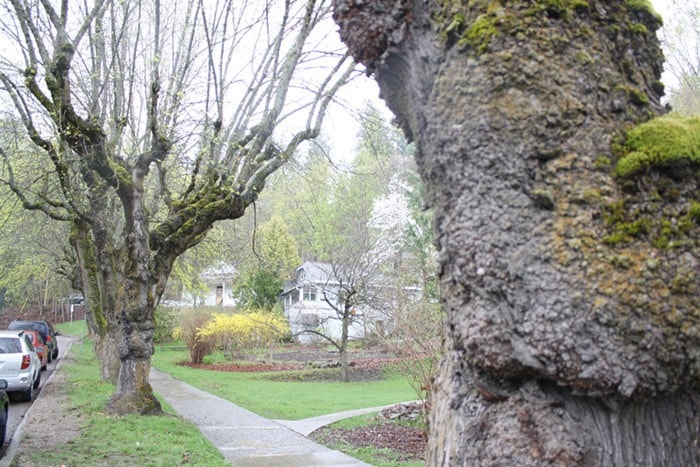A new management plan lays out steps to “protect and conserve” the city’s tree canopy, while warning many individual trees are deteriorating and may have to be cut down.
“Nelson’s urban forest is in decline,” says the draft document, received by city council last month. “Many older trees on our streets and in our parks... suffer from a variety of problems related to poor planning, management and care, traffic and infrastructure conflicts.”
The plan says over the next 20 years, a “substantial” number of trees, especially downtown and in Uphill, will need to be removed as they become hazardous.
However, it also sets out criteria for the maintenance and renewal of the city’s treed character — intended to head off controversies like ones seen in recent years over the so-called donut tree, Lions Park poplars, and Baker Street lindens.
“Removal of trees can be contentious,” the plan acknowledges. “While there are many legitimate reasons for removals, in many instances there are also very good reasons for leaving them untouched.”
The plan calls for a “proactive and sensitive approach” when removals are considered, and suggests the largest and oldest trees be assessed by a certified arborist every five years.
“Trees in Nelson will be managed by determining which trees are deteriorating to a point that they have a significant potential to injure people or damage property,” it says.
“Other than in emergencies, trees will be removed only in accordance with objective tree removal criteria... and by following a clear process of evaluation, consultation, and public notice.”
The report says a city tree might be axed if its roots damage infrastructure or utilities, it’s in the way of hydro lines, or for the sake of fire mitigation work.
The plan also suggests policies to encourage community tree-planting and a bylaw to protect trees on city property from “unnecessary destruction, loss or damage caused by any person.”
The latter would come with measures to address compensation or replacement — and any money recovered would be placed in a reserve to help procure and plant other trees. Developers who remove trees from public spaces are also expected to replace them.
City trees should be considered “green infrastructure,” the report adds, and be given the same importance as any other city utility. Their dollar value should be quantified and a business case developed to finance their renewal.
The plan was warmly received by council when presented by works and parks supervisor Karen MacDonald, who called it long overdue and said it would be carried out in consultation with Nelson Hydro and the fire department.
In the short-term, the city’s street tree inventory will be updated, and its tree removal policy revised.
“I’m happy to see this plan come together,” said councillor Paula Kiss. “I often lament we don’t attach economic value to our trees. They are a considerable asset to Nelson.”
The city’s parks and other public lands contain approximately 30,000 trees, including 480 “heritage trees” planted in the 1920s.
